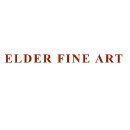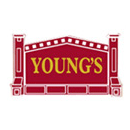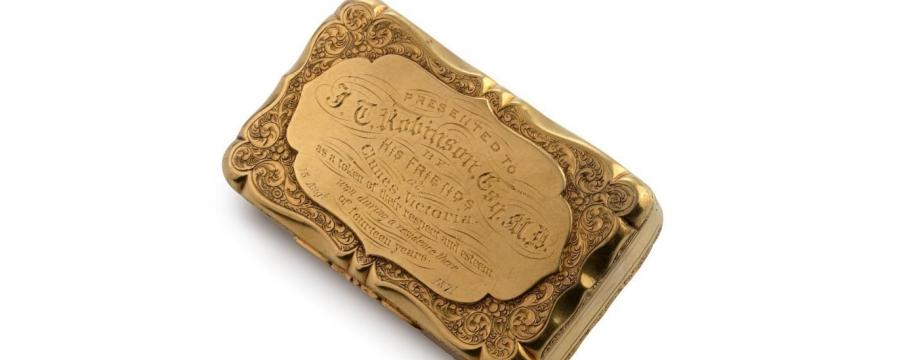

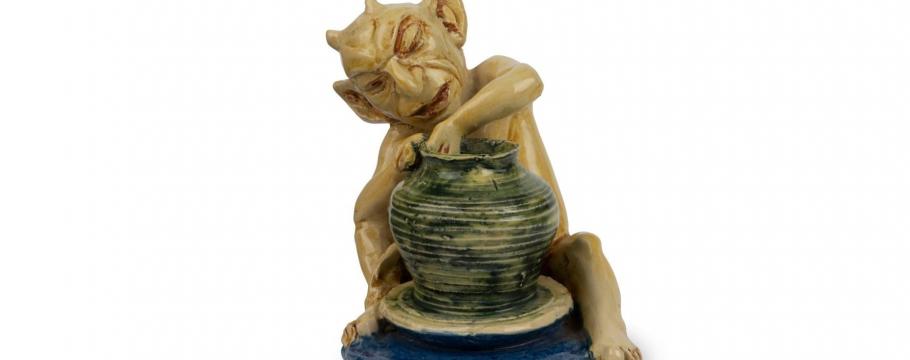


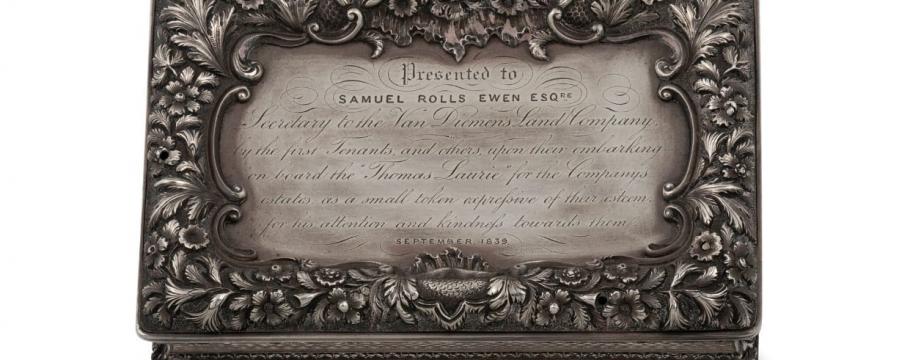


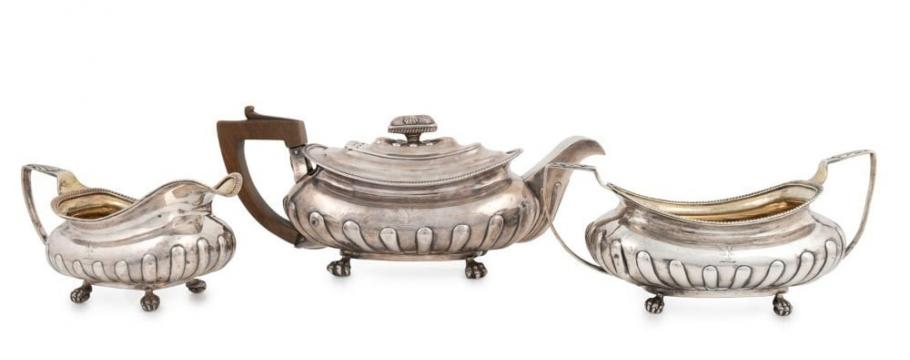
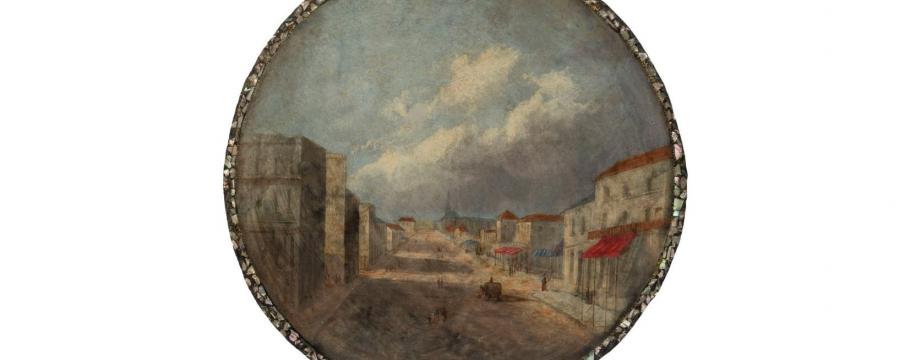
Australian antiques and art history stalwart auctions her collection
Author: Richard Brewster | Posted: 10th October, 2024
A stalwart of Australian antiques and art history, Dr Jane Lennon, is auctioning many items from her personal collection of Australian silver and gold, rare photographs, furniture, pottery, jewellery and paintings at Melbourne-based Leski Auctions forthcoming sale from 11am Sunday October 20 at 727-729 High Street, Armadale.
With a PhD in art history from the University of Sydney and long experience in the fine arts field including as co-editor of The Australian Collector and its successor The World of Antiques and Art, in 2003 Dr Lennon purchased a rambling 1840s sandstone building in Elizabeth Street, Hobart, Tasmania.
Here, she traded by appointment as Ancanthe, named for Lady Jane Franklin’s Museum, which opened in 1843 in the Hobart suburb of Lenah Valley.
The wife of Van Diemen’s Land lieutenant-governor Sir John Franklin (the position he held from 1837-1843), in 1839 Lady Jane bought 53 hectares of land near Hobart Town for a botanical garden, which she called Ancanthe.
In these grounds she organised the building of a natural history museum modelled on a Greek temple where the collections she had been establishing in Government House was transferred.
Lady Jane was highly intelligent and strongly idealistic, and during her time in Van Diemen’s Land (now Tasmania), the island State became the centre of Australian colonies with well-developed academic institutions.
She also was an indefatigable traveller, becoming the first woman to climb Mount Wellington and to travel overland from Melbourne to Sydney. In old age, she visited the United States, Hawaii, Japan and India – but is mainly remembered for organising the search between 1850 and 1857 for Sir John’s lost Arctic expedition while he was trying to discover a North-West Passage.
Dr Lennon is selling her items to help her find the time to complete several long-gestating research projects on Australian historical subjects.
The auction features an important solid yellow high carat gold snuff box (lot 11) finely engraved with foliate design and an Aboriginal figure hunting an emu – estimated at $25,000 to $35,000.
It is engraved with the words “PRESENTED TO J.T. ROBINSON ESQ. M.D. BY HIS FRIENDS AT CLUNES, VICTORIA AS A TOKEN OF THEIR RESPECT AND ESTEEM WON DURING A RESIDENCE THERE OF FOURTEEN YEARS. 15 AUG.t. 1871”.
Originally from Ireland, John Trimble Robinson (c1820-1882) was the ship’s surgeon on the clipper Red Jacket that on May 4, 1854 departed Liverpool for Melbourne.
Its captain Samuel Reed wanted to defeat the Mermaid in a race to their destination so detoured via the Antarctic, much to the chagrin of many of the passengers.
After a brief stint in Ballarat, in 1856 Robinson established his practice in the goldfield town of Clunes, a town of 20 residents.
By the time he left 14 years later, the town’s population had grown to about 6000, and the grateful inhabitants commissioned the gold box and a gold and diamond ring presented to him at a banquet in his honour.
A rare early watercolour panorama of the Port River & North Parade, Port Adelaide, 1855 by artist, forger and fraudster Frank (Francis) George Hankey (c1832-1911) on four panels (lot 530) is another highlight, with a catalogue estimate of $10,000-$20,000.
The scene depicted was largely destroyed in the Great Port Adelaide Fire of November 1857 in a blaze covering several acres that wiped out half the area and almost its entire commercial district including three hotels, 12 shops, one bank, 16 cottages, two stables and several outbuildings.
Frank was the son of William Hankey (1807-1872), a scion of the Hankey mercantile and banking dynasty in London, and arrived in Adelaide on board the Madras on January 11, 1855 with Samuel Francis White, a principal of their families joint London mercantile firm Dauglish, White & Hankey – which possessed interests in Australian mining and communications and large commercial interests in the colony.
By the mid-1860s, Frank had settled in Sydney where he served several lengthy jail terms for forgery, despite inheriting princely sums from his father’s estate – engendered largely by his love of expensive living.
A devil potter statue (lot 330) by Marguerite Mahood (1901-1989), originally part of well-known collector Marvin Hurnall’s collection, is a strong attraction along with a rare and significant c1865 cedar chair (lot 319) with native wildflower embroidery in the manner of Louisa Ann Meredith. The chair’s back has a rare carved HOBART TOWN coat of arms incorporating the Latin “Sic Fortis Hobartia (Crevit)” (Thus grew Hobart strong).
Believed to be created as a companion pair to this is the antique colonial blackwood chair from the same year (lot 320), also with its Hobart Town coat of arms.
A rare presentation sterling silver snuff box (lot 2), given in September 1839 to Van Diemen’s Land Company secretary Samuel Rolls Ewen by the first tenants as a token of their esteem when he embarked on the Thomas Laurie for the company’s estates, should garner plenty of interest, along with a Henry Steiner 19th century antique Australian silver emu egg inkwell with an Aboriginal figure and emu finial (lot 16).
A Royal Worcester set of four “Birds of Paradise” (lot 203), a painting entitled King Street, 1855 (lot 532) by Frederick Casemero (Charles) Terry (1827-1869) and a circa 1807 three- piece sterling silver tea service (lot 1) made by London’s Joseph Teconet, for the New South Wales Corp Captain John Piper (1774-1851) after whom Sydney’s Point Piper suburb is named, are other significant finds.

